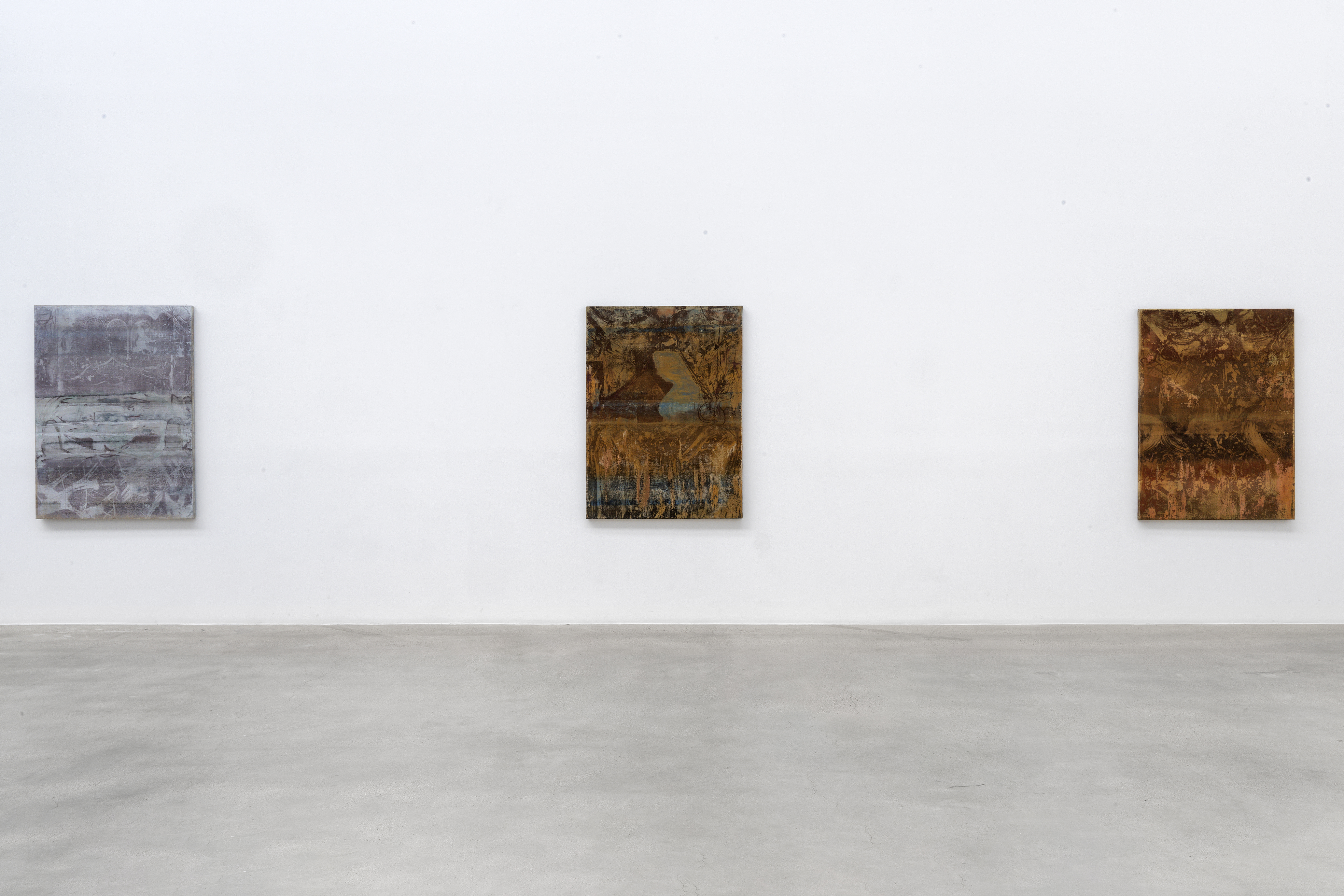Re-enchantment
Thaddaeus Ropac, Paris
2024
Thaddaeus Ropac, Paris
2024
Grotova begins her works in the darkroom, using traditional, analogue, camera-less photographic techniques to layer the presence of plants and her own body. In her most recent pieces, she also worked with her mother to create images of their two bodies. The images are then layered with earth and stone pigments, notably haematite – ‘the blood stone’. The strata and traces created by this process reflect the way in which soil archives its encounters, without hierarchy. The work’s stratification combined with its relationship to the non-hierarchical nature of soil, disrupts understanding of patriarchal, human-centric narratives, such as those of the totalitarianism.
Oona Doyle
Curator, Thaddaeus Ropac

‘I was born hours before Chernobyl, on 25th April 1986. This sentence holds two events. One a catastrophe that destroyed thousands of square kilometres of land and the lives of millions of people, and in the words of Svetlana Alexievich, the flow of time itself: ‘Chernobyl is, above all, a catastrophe of time’. The second is the event of birth, the happening between mother and daughter in which they separate, a splitting of a whole into two.
The lower part of Yadro (Nucleus), 2024 is a photogram of myself and my mother framed by ashy white weeds and a dance of marks. Always holding on to one another whilst being pulled apart, fixed by light whilst fading away.’


‘When my great
grandmother Klavdia was released from the camp of Wives of Traitors to the
Motherland she wasn’t allowed to return home but had to remain in Kazakhstan
for another fifteen years, until the death of Stalin. Thus, like other former
inmates of the camp, she got a job on the construction of the new railway — a
strategic route for coal transportation. The women were doing hard labour of
laying and servicing the tracks and lived in the designated shared barracks —
the ‘Railway builders’ town’. My half-German grandmother remembered how the
women would gather around the small stream in the end of the day to launder the
workwear, theirs and that of the male workers.’


Soil Time, 2024
Mugwort, Soviet railway map, pages from Paysant Woman magazine (c.1950s), stocking, soil, ash
‘Soil Time, 2024 contains mugwort that my mother Tatiana and I collected on the research trip to the former site of the gulag camp of Wives of Traitors to the Motherland where my great-grandmother and grandmother were detained from 1937 to 1945. After the death of Stalin, the camp was raised to the ground and all the evidence of its existence was eradicated. What used to be a prison that housed thousands of women is now a field of grass: the plants are both witnesses of the land’s traumatic history and a symbol of its regeneration.
In the vitrine, plants are layered with Soviet propaganda images of women at work and the railway map that was used to transport coal from Kazakhstan to Russia which was built by former female inmates. The layered space makes connections between the land exploitation and the erased female histories.’